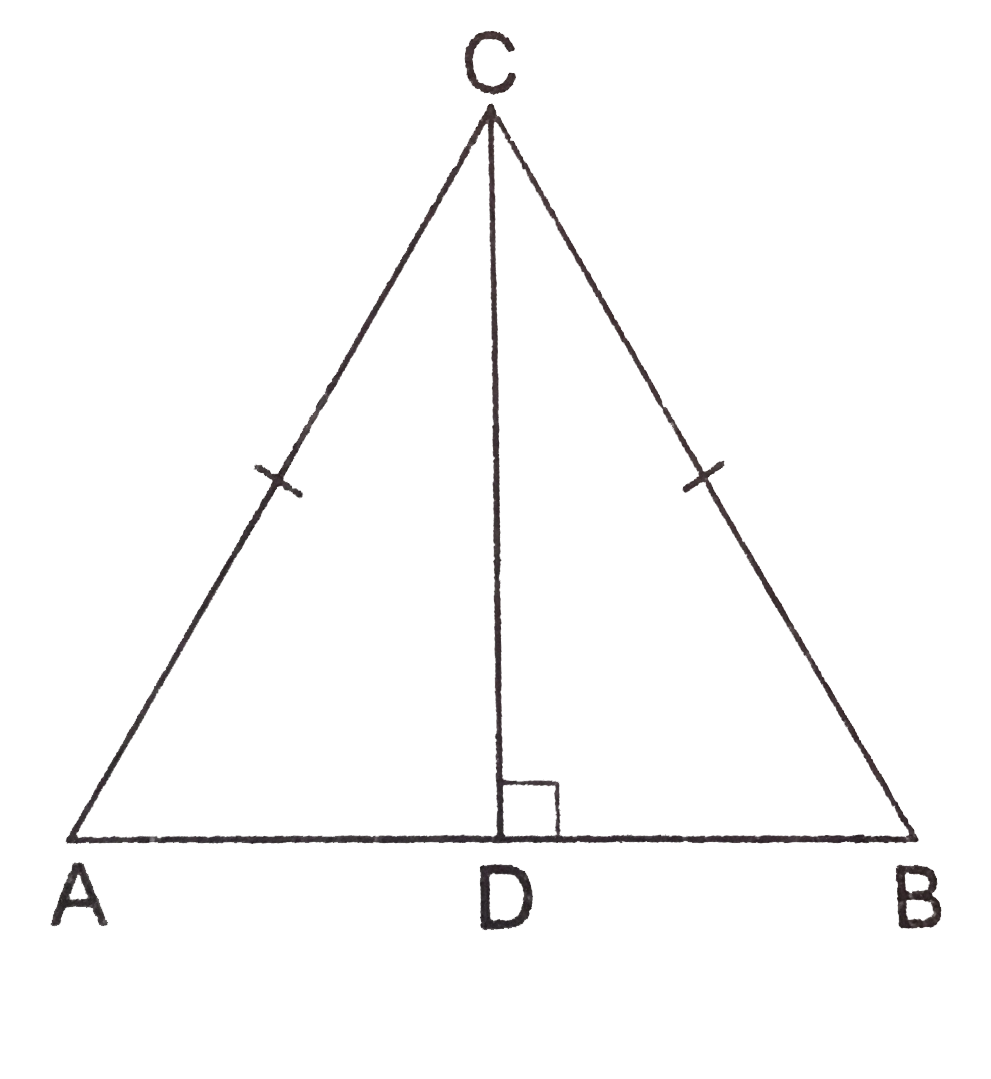The two equal sides of an isosceles triangle with fixed base b are decreasing at the rate of 3cm/s. How fast is the area decreasing when the two equal sides are equal to the base?
At a certain instant t, let △ABC be an isosceles triangle in which AB = AC = x cm and BC = b cm
Then, dxdt=3cm/sec (given)...(i)
Draw AD⊥BC. Then, BD=DC=b2
∴AD=√x2−b24=√4x2−b22
∴A=12b.√4x2−b22=b√4x2−b24
⇒dAdt=dAdx.dxdt
=(dAdx×3) [∵dxdt=3cm/sec]
=ddx{b√4x2−b24}×3
=3b4.12(4x2−b2)−1/2.(8x)=3bx√4x2−b2
∴[dAdt]x=b=3b2√4b2−b2=3b2√3b=√3b

Topper's Solved these Questions
- APPLICATIONS OF DERIVATIVESBOOK - RS AGGARWALCHAPTER - APPLICATIONS OF DERIVATIVESEXERCISE - Exercise 11A
21 Videos
- APPLICATIONS OF DERIVATIVESBOOK - RS AGGARWALCHAPTER - APPLICATIONS OF DERIVATIVESEXERCISE - Exercise 11B
17 Videos
- ADJOINT AND INVERSE OF A MATRIXBOOK - RS AGGARWALCHAPTER - ADJOINT AND INVERSE OF A MATRIXEXERCISE - Exercise 7
37 Videos
- AREA OF BOUNDED REGIONS BOOK - RS AGGARWALCHAPTER - AREA OF BOUNDED REGIONS EXERCISE - Exercise 17
39 Videos
Similar Questions
The two equal sides of an isosceles triangle with fixed base b are decreasing at the rate of 3cm/s. How fast is the area decreasing when the two equal sides are equal to the base?
View SolutionThe two equal sides of an isosceles triangle with fixed base b are decreasing at the rate of 3 cm per second. How fast is the area decreasing when the two equal sides are equal to the base ?
View Solution
Knowledge Check
Each of the two equal sides of an isosceles right triangle is 10 cm long. Its area is
A5√10cm2B50 cm2C10√3cm2D75 cm2Each of equal sides of an isosceles triangle is 13 cm. If the length of base is 24 cm then its area is
A50cm2B60cm2C55cm2D65cm2Each of the equal sides of an isosceles triangle is 13 cm and its base is 24 cm. The area of the triangle is
A156 cm2B78 cm2C60 cm2D120 cm2
The angles opposite to equal sides of an isosceles triangle are ..........
View SolutionFind the area of an isosceles triangle having the base x cm and one side y cm
View SolutionTheorem 7.2 : Angles opposite to equal sides of an isosceles triangle are equal.
View SolutionShow that in an isosceles triangle, angles opposite to equal sides are equal.
View SolutionThe length of each equal side of an isosceles triangle is 25 cm and the included angle between those two sides is 90°. Find the area of triangle.
View Solution